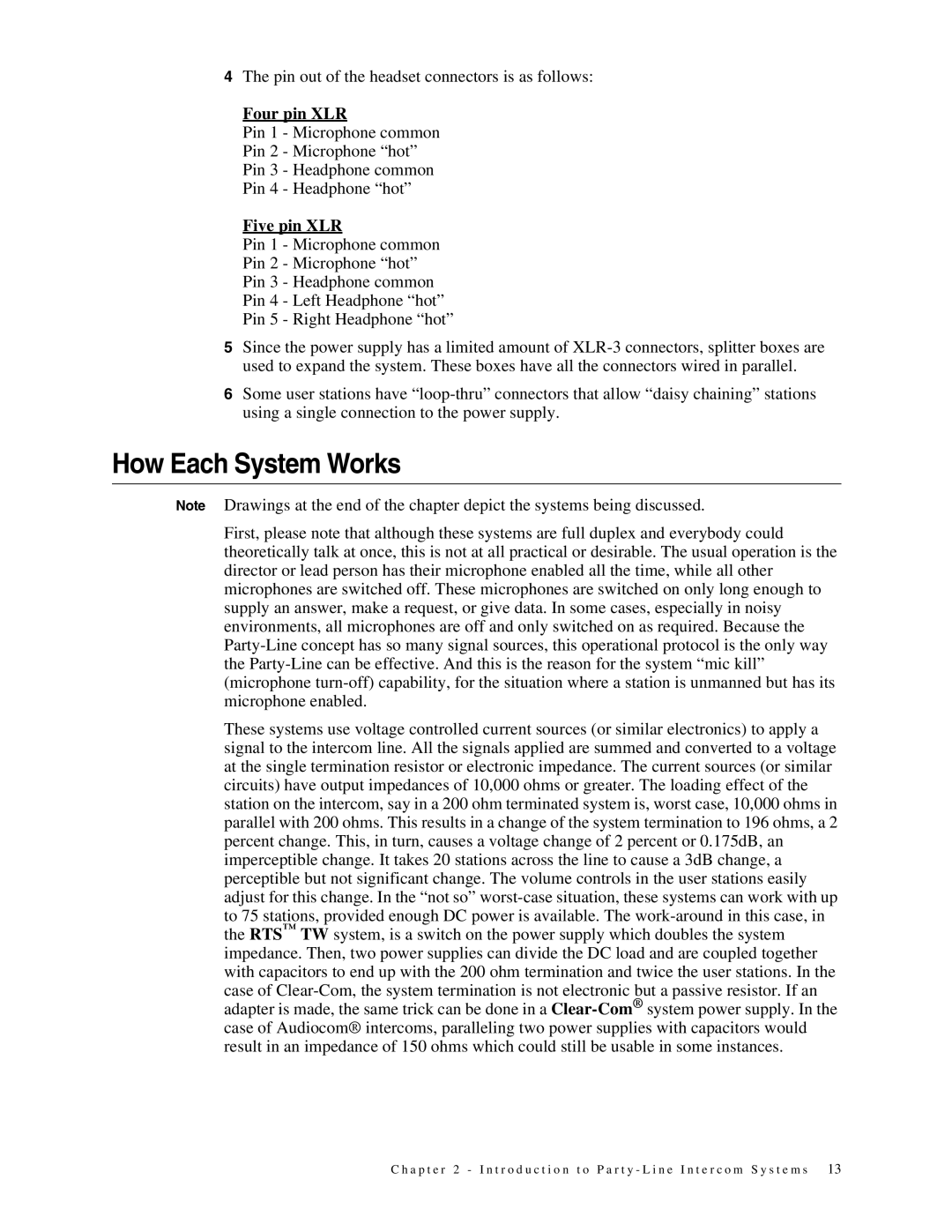4The pin out of the headset connectors is as follows:
Four pin XLR
Pin 1 - Microphone common Pin 2 - Microphone “hot” Pin 3 - Headphone common Pin 4 - Headphone “hot”
Five pin XLR
Pin 1 - Microphone common Pin 2 - Microphone “hot” Pin 3 - Headphone common Pin 4 - Left Headphone “hot” Pin 5 - Right Headphone “hot”
5Since the power supply has a limited amount of
6Some user stations have
How Each System Works
Note Drawings at the end of the chapter depict the systems being discussed.
First, please note that although these systems are full duplex and everybody could theoretically talk at once, this is not at all practical or desirable. The usual operation is the director or lead person has their microphone enabled all the time, while all other microphones are switched off. These microphones are switched on only long enough to supply an answer, make a request, or give data. In some cases, especially in noisy environments, all microphones are off and only switched on as required. Because the
These systems use voltage controlled current sources (or similar electronics) to apply a signal to the intercom line. All the signals applied are summed and converted to a voltage at the single termination resistor or electronic impedance. The current sources (or similar circuits) have output impedances of 10,000 ohms or greater. The loading effect of the station on the intercom, say in a 200 ohm terminated system is, worst case, 10,000 ohms in parallel with 200 ohms. This results in a change of the system termination to 196 ohms, a 2 percent change. This, in turn, causes a voltage change of 2 percent or 0.175dB, an imperceptible change. It takes 20 stations across the line to cause a 3dB change, a perceptible but not significant change. The volume controls in the user stations easily adjust for this change. In the “not so”
C h a p t e r 2 - I n t r o d u c t i o n t o P a r t y - L i n e I n t e r c o m S y s t e m s 13
